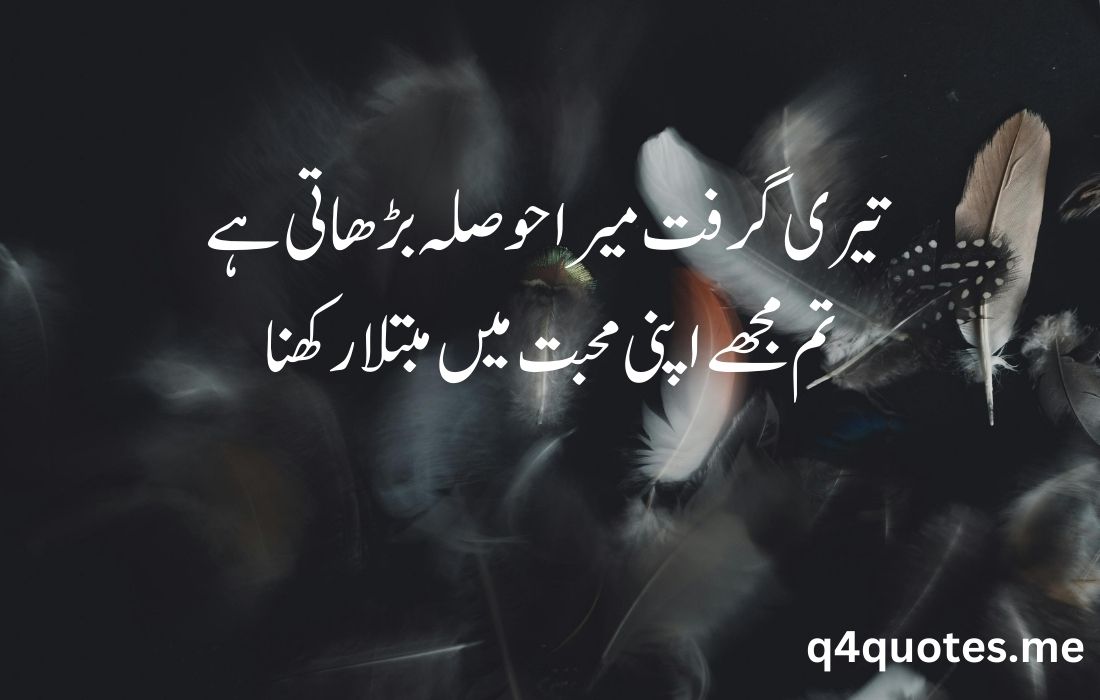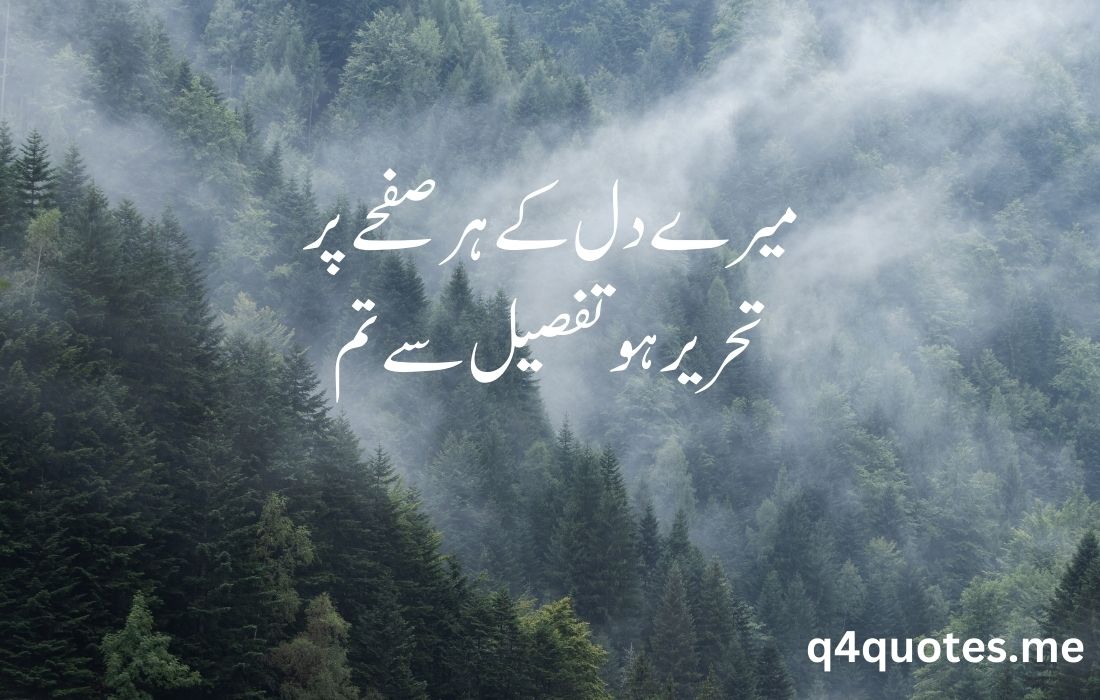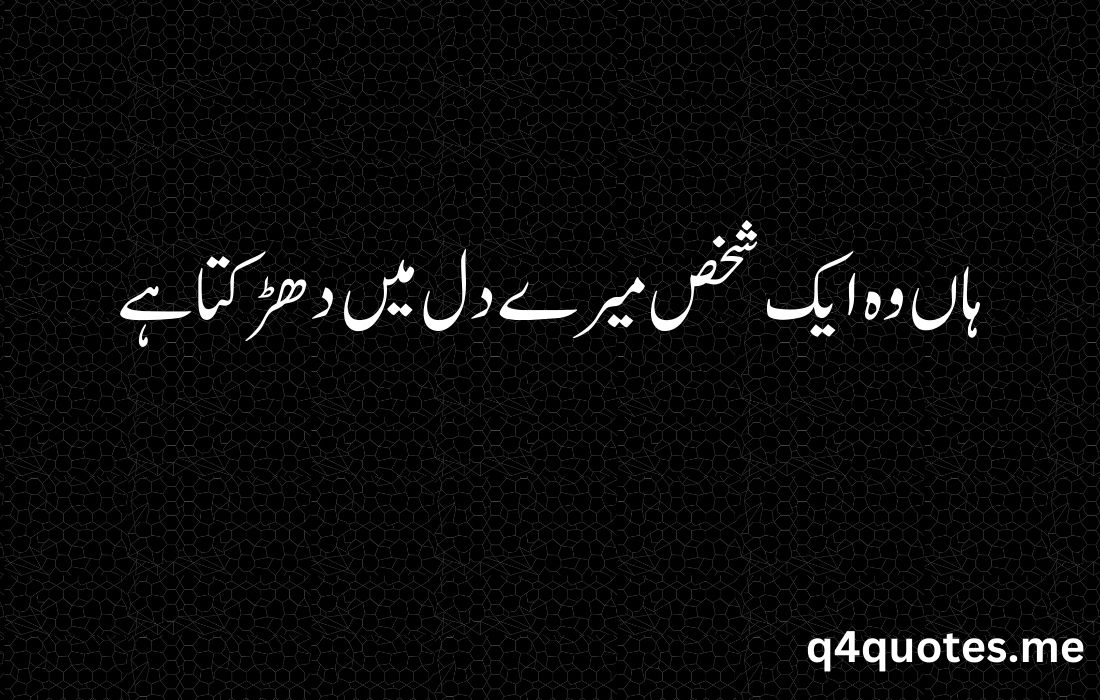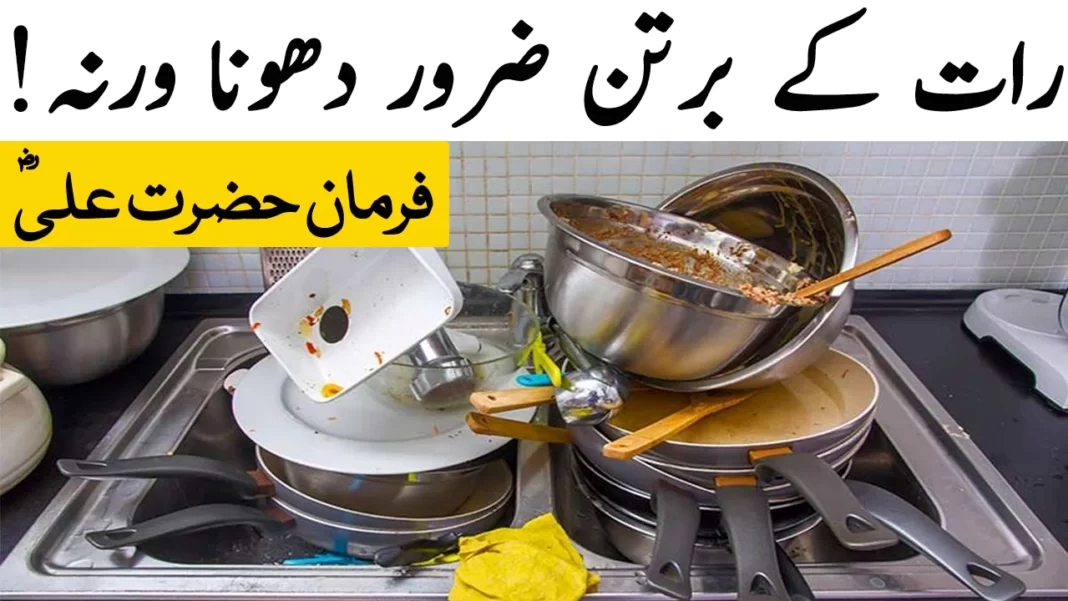what is Love poetry in urdu text?
Love poetry in urdu text , a genre as ancient as human emotion itself, captures the profound and complex feelings that accompany love. From the earliest civilizations, poets have sought to express the inexpressible, turning the intangible feelings of love into words that resonate across time and culture.
At its core, love poetry in urdu text is an exploration of the heart. It delves into the joy of love found, the pain of love lost, and the yearning for love unattainable. Poets like Sappho, Shakespeare, and Pablo Neruda have used their craft to explore these themes, offering readers a window into their most intimate thoughts and experiences.
The beauty of love poetry in urdu text lies in its universality. While the details of love stories may differ, the emotions they evoke are shared by people everywhere. Whether it’s the giddy excitement of new love or the deep sorrow of unrequited affection, love poetry in urdu text speaks to the human experience in a way few other forms of art can.
Moreover, love poetry in urdu text often transcends the personal, touching on broader themes of life, death, and the nature of existence. For example, Shakespeare’s sonnets are not just about love; they explore the passage of time, the fleeting nature of beauty, and the immortality of art. Similarly, in Neruda’s poems, love becomes a lens through which the poet views the world, blending the personal with the political and the natural with the spiritual.
In a world that is constantly changing, love poetry in urdu text remains a constant. It continues to inspire, comfort, and connect us, proving that while languages and cultures may evolve, the language of love is truly timeless. Whether whispered in a lover’s ear or written on a page, love poetry is a testament to the enduring power of human emotion.
Table of Contents
ToggleLove poetry in urdu text :

یوں تو ہم اپنے آپ میں گم تھے
پر سچ تو یہ ہے کہ وہاں بھی تم تھے

دنیا کے بازار میں زندگی کا سب سے قیمتی
سکہ مخلص محبوب کا ساتھ ہے

عادتیں مختلف ہیں ہماری دنیا والوں سے
کم محبت کرتے ہیں مگر لاجواب کرتے ہیں

ہمیشہ ک لئے اپنے پاس رکھ لو نہ مجھے
کوئی پوچھے تو کہ دینا دل ہے میرا

میرا ہر دن خوبصورت بنا دیتا ہے تمہارا ساتھ
چند لمحوں کی باتیں کچھ پل کا مسکرانا

تیری گرفت میرا حوصلہ بڑھاتی ہے
تم مجھے اپنی محبت میں مبتلا رکھنا

محبت ایک خاموش گفتگو ہے جہاں
دل جذبات کی زبان بولتے ہیں
Love poetry in urdu text copy paste

میرے دل کے ہر صفحے پر
تحریر ہو تفصیل سے تم

بہترین احساس یہ ہے کے اپ اسکی طرف دیکھو اور وہ پہلے ہی دیکھ رہا ہو 
کسی کی خوشی کے لئے اس سے دور رہنا بھی محبت ہے 
ہاں وہ ایک شخص میرے دل میں دھڑکتا ہے 
عشق کا تو پتا نہیں پر جو تم سے ہے کسی بندے سے نہیں
Love poetry in urdu text sms

محبت تو وہ بھی کرتے ہیں جن کی ملاقاتیں نہیں ہوتیں 
ساری دنیا کا ساتھ اپنی جگہ
تیرے ہونے کی بات اپنی جگہ

تیرے دیدار پر اگر میرا اختیار ہوتا یہ روز روز ہوتا بار بار ہوتا 
اگر ہم نے منایا تو محبت ہو جاۓ گی تمھیں 
قدم قدم پرنئے لوگ منتظر ہیں مگر
ہم ایک شخص کو دل سے لگاے پھرتے ہیں

جو لکھی ہے میرے خیالوں میں
خوبصورت وہ کہانی ہو تم

اگر تم سے نہ ملتے تو شاید
راز ہی رہ جاتا کے محبت کیسی ہوتی ہے
Love poetry in urdu text for you

تیرے سنگ گزر جائے یہ عمر جو باقی ہے 
وہ میرے دل کا پسندیدہ شخص ہے
اس کے ذکر پر تو روح بھی مسکراتی ہے

الحمدللہ. الله نے ایسے شخص سے ملایا ہے
جس کے ساتھ رہنے کی خواہش دنیا میں بھی ہے اور جنّت میں بھی

احساس محبت میں بس ہم اتنا ہی کہتے ہیں
تیرے بغیر بھی ہم تیرے ہی رہتے ہیں

بات یہ نہیں کہ کوئی اور ملتا نہیں
بات یہ ہے کےدل بے ایمان نہیں

میں بہت زیادہ اپنے اپ میں ہوتا ہوں جب میں آپ کے ساتھ ہوتا ہوں
chai poetry in urdu , sad bewafa poetry in urdu , yaad poetry in urdu , 1 line quotes in urdu , urdu quotes , attitude poetry
The Art of Love Poetry: A Journey Through Time and Emotion
Love poetry, a genre as ancient as language itself, has been a powerful medium through which humanity expresses the profound and complex emotions that love invokes. Whether it is the tender whispers of affection, the fiery passions of desire, the melancholy of unrequited love, or the serenity of a long-lasting partnership, love poetry captures the essence of what it means to love and be loved. Throughout history, poets from every corner of the world have turned to verse to articulate their experiences of love, creating a rich tapestry of emotions, ideas, and cultural expressions that continue to resonate across time and space.
The Origins of Love Poetry
The history of love poetry dates back to the earliest civilizations. Some of the oldest known love poems were written in Sumer, an ancient civilization in Mesopotamia, around 2000 BCE. These early poems were often hymns or songs dedicated to deities, where love was celebrated as a divine and sacred force. For instance, the “Epic of Gilgamesh,” one of the earliest known literary works, contains references to love and desire, though often intertwined with themes of mortality and divine intervention.
In Ancient Egypt, love poetry flourished, with poems that were more personal and less formal than those of their Sumerian predecessors. The Egyptian love poems, often found on papyrus or inscribed on the walls of tombs, reveal a society where romantic love was celebrated openly and was a common theme in literature. These poems are known for their lyrical beauty and vivid imagery, often describing the physical and emotional sensations of love in intimate detail.
The Hebrew Bible, particularly the “Song of Songs,” is another early example of love poetry. The “Song of Songs” is a collection of lyrical poems that celebrate the beauty of love and the joys of marriage. While its religious significance has been a subject of much interpretation, the sensual and passionate nature of the verses suggests a deep appreciation of human love and desire.
Classical Love Poetry: Greece and Rome
The classical civilizations of Greece and Rome made significant contributions to the development of love poetry. In Ancient Greece, the poet Sappho of Lesbos, who lived around 600 BCE, is one of the most celebrated figures in the history of love poetry. Her poetry, much of which has survived only in fragments, is renowned for its intense emotionality and personal expression. Sappho’s verses often explore the pain and pleasure of love, using vivid metaphors and direct, evocative language that has resonated with readers for centuries.
Sappho’s influence can be seen in the work of later poets, such as the Roman poet Catullus, who lived in the first century BCE. Catullus’ love poems are passionate and often turbulent, reflecting his intense feelings for his lover, whom he famously referred to as “Lesbia.” His poetry is marked by a striking emotional honesty, as he grapples with the ecstasy and agony of love. Catullus’ work had a profound influence on later Latin poets, including Ovid, whose “Amores” and “Ars Amatoria” are seminal works in the tradition of erotic and didactic love poetry.
Ovid’s “Metamorphoses,” while not strictly a work of love poetry, contains numerous tales of love and transformation, illustrating the power of love to change both people and the world around them. Ovid’s ability to blend the erotic with the mythological set a precedent for future poets, particularly during the Renaissance, when his works were rediscovered and celebrated.
Medieval and Renaissance Love Poetry
The medieval period saw the emergence of courtly love, a concept that profoundly influenced the literature of the time. Originating in the courts of southern France in the 12th century, courtly love was a highly stylized and idealized form of romantic love, often involving a knight and a noble lady. This form of love was typically characterized by chivalry, devotion, and a sense of unattainable longing.
The troubadours of medieval France were the poets and musicians who composed and performed songs of courtly love. Their works often celebrated the beauty and virtue of the beloved, as well as the trials and tribulations of the lover. The themes of courtly love were further developed by poets in other parts of Europe, such as the Minnesingers in Germany and the trovatori in Italy.
One of the most famous works of medieval love poetry is Dante Alighieri’s “La Vita Nuova,” a collection of poems and prose that recounts his love for Beatrice, a woman whom he idealized and adored from afar. “La Vita Nuova” is not only a personal expression of Dante’s love but also a work that reflects the spiritual and philosophical ideals of the time, blending the earthly and the divine in its portrayal of love.
The Renaissance period marked a revival of interest in the classical ideals of beauty, love, and poetry. Petrarch, an Italian scholar, and poet, was one of the most influential figures in this movement. His sonnets, dedicated to his beloved Laura, became the model for love poetry across Europe. The Petrarchan sonnet, with its distinctive structure and themes of unattainable love, inspired poets such as William Shakespeare, Sir Philip Sidney, and Edmund Spenser.
Shakespeare’s sonnets, in particular, are among the most famous love poems in the English language. Written in the late 16th century, these 154 sonnets explore the many facets of love, from its beauty and joy to its darker, more painful aspects. Shakespeare’s exploration of love is profound and multifaceted, addressing not only romantic love but also themes of friendship, time, and mortality.
Edmund Spenser’s “Amoretti” and Sir Philip Sidney’s “Astrophel and Stella” are other notable examples of Renaissance love poetry. Both works are sonnet sequences that explore the complexities of love, desire, and courtship. Spenser’s “Amoretti” is particularly notable for its celebration of marital love, as the poems are believed to have been written during his courtship of his wife, Elizabeth Boyle.
The Romantic Era and Beyond
The Romantic era, which began in the late 18th century, marked a significant shift in the way love was portrayed in poetry. Romantic poets emphasized the emotional and individualistic aspects of love, often celebrating it as a sublime and transformative force. This period saw a return to nature, emotion, and the imagination, with love poetry reflecting these themes.
William Wordsworth, Samuel Taylor Coleridge, and Lord Byron were among the leading figures of the Romantic movement. Wordsworth’s love poetry often focused on the natural world and its connection to human emotions, while Coleridge’s work explored the more mystical and spiritual aspects of love. Byron, known for his passionate and often scandalous love affairs, infused his poetry with a sense of intense emotion and personal experience.
Percy Bysshe Shelley and John Keats, two of the most influential Romantic poets, also made significant contributions to love poetry. Shelley’s “Epipsychidion” and “Love’s Philosophy” are lyrical and philosophical meditations on love, reflecting his belief in the power of love to transcend the physical and reach the spiritual. Keats, on the other hand, is known for his sensuous and richly descriptive love poetry, as seen in his famous odes, such as “Ode to a Nightingale” and “Ode on a Grecian Urn.” His sonnet “Bright Star” is one of the most enduring expressions of love in English literature, capturing the longing for eternal union with the beloved.
The Victorian era, while more restrained in its expression of love, still produced some of the most beautiful and enduring love poetry. Elizabeth Barrett Browning’s “Sonnets from the Portuguese,” a sequence of 44 sonnets, is a deeply personal and intimate exploration of her love for her husband, the poet Robert Browning. Her famous sonnet “How Do I Love Thee? Let Me Count the Ways” is one of the most iconic love poems in the English language.
Robert Browning himself was also a master of love poetry, though his work often took a more dramatic and psychological approach. His monologues, such as “Porphyria’s Lover” and “My Last Duchess,” explore the darker and more complex aspects of love, including obsession, jealousy, and power.
Modern and Contemporary Love Poetry
The 20th century brought significant changes to the world of love poetry, as poets began to experiment with new forms, themes, and voices. Modernist poets like T.S. Eliot and Ezra Pound broke away from traditional forms and explored the fragmented, often disillusioned nature of love in a rapidly changing world. Eliot’s “The Love Song of J. Alfred Prufrock” is a prime example of this, with its portrayal of a man paralyzed by indecision and insecurity, unable to express his love.
The Harlem Renaissance in the United States also produced powerful love poetry, with poets like Langston Hughes and Claude McKay exploring love in the context of race, identity, and social change. Hughes’ “The Weary Blues” and McKay’s “If We Must Die” reflect the struggles and joys of love in a racially divided society, bringing new perspectives to the genre.
In the post-war period, poets like Sylvia Plath, Anne Sexton, and Pablo Neruda brought a raw and often confessional tone to love poetry. Plath and Sexton, known for their deeply personal and emotionally intense poetry, often explored the pain and complexity of love, touching on themes of mental illness, identity, and self-destruction. Neruda, on the other hand, is celebrated for his passionate and sensual love poems, particularly in his collection “Twenty Love Poems and a Song of Despair,” which captures the intensity and physicality of love.
The late 20th and early 21st centuries have seen a diversification of voices in love poetry, with poets from various cultural, ethnic, and gender backgrounds
Modern and Contemporary Love Poetry (continued)
emerging with their unique perspectives. This broadening of the poetic landscape has enriched the genre, allowing for a more inclusive and multifaceted exploration of love. Love poetry today reflects the diversity of human experience, encompassing not only romantic love but also love in all its forms, including familial love, self-love, and love for community and culture.
One of the most significant developments in contemporary love poetry has been the rise of feminist and queer voices. These poets have challenged traditional representations of love, which often centered on heteronormative and patriarchal perspectives, and have introduced new ways of thinking about love, desire, and relationships.
Adrienne Rich, a pioneering feminist poet, explored the intersections of love, politics, and identity in her work. In her collection “The Dream of a Common Language,” Rich examines the complexities of love between women, the challenges of maintaining individuality within a relationship, and the impact of societal expectations on personal relationships. Her poetry is both intimate and political, challenging readers to consider the broader implications of love in a world marked by inequality and oppression.
Audre Lorde, another key figure in feminist and queer poetry, celebrated the power of love, particularly black, lesbian love, as a force for resistance and liberation. Lorde’s poetry is characterized by its emotional intensity and unapologetic embrace of desire and eroticism. In poems like “Love Poem” and “Making Love to Concrete,” Lorde explores the ways in which love can be both a source of strength and vulnerability, a means of connection and a site of struggle.
The work of contemporary poets like Ocean Vuong, Danez Smith, and Warsan Shire has further expanded the boundaries of love poetry. Vuong, in his collection “Night Sky with Exit Wounds,” combines themes of love, family, and migration, reflecting on the impact of war and displacement on personal relationships. His poetry is lyrical and poignant, capturing the tenderness and pain of love in a fractured world.
Danez Smith, a black, queer, non-binary poet, explores love in the context of race, gender, and queerness. Their poetry is both raw and tender, addressing the joys and challenges of loving and being loved in a world that often marginalizes and devalues certain identities. In their collection “Don’t Call Us Dead,” Smith writes about the love between black men, the impact of violence and trauma on love, and the resilience of love in the face of adversity.
Warsan Shire, a Somali-British poet, brings a diasporic perspective to love poetry. Her work often deals with themes of migration, displacement, and the longing for home, intertwining these with the complexities of love and relationships. Shire’s poetry, as seen in her collection “Teaching My Mother How to Give Birth,” is both visceral and evocative, capturing the deep emotional currents that run through the experience of love and loss.
The Influence of Music and Popular Culture on Love Poetry
In addition to the contributions of individual poets, the genre of love poetry has been profoundly influenced by music and popular culture. The connection between poetry and song has been a constant throughout history, from the ancient troubadours to contemporary songwriters. Music, with its rhythm, melody, and emotional immediacy, has always been a natural partner to poetry, especially when it comes to expressing the depths of love.
In the 20th and 21st centuries, popular music genres such as blues, jazz, rock, and hip-hop have become powerful vehicles for love poetry. Songwriters like Bob Dylan, Leonard Cohen, Joni Mitchell, and Nina Simone have used their lyrics to explore the complexities of love, infusing their words with the emotional intensity and personal reflection that characterize great poetry. Dylan’s “Love Minus Zero/No Limit,” Cohen’s “Hallelujah,” Mitchell’s “A Case of You,” and Simone’s “I Put a Spell on You” are just a few examples of songs that blur the line between poetry and music, offering profound meditations on love and its many facets.
Hip-hop, in particular, has emerged as a vital space for contemporary love poetry. Artists like Tupac Shakur, Lauryn Hill, Kendrick Lamar, and Frank Ocean have used their music to explore love in its many forms, from romantic love to self-love, to love for community and social justice. Their lyrics often draw on the rich tradition of African American poetry, blending the personal and the political to create powerful statements about love’s role in both individual lives and broader social movements.
The influence of popular culture on love poetry extends beyond music to include film, television, and digital media. Movies and TV shows often incorporate love poetry or poetic dialogue to heighten the emotional impact of romantic scenes, while social media platforms like Instagram and Twitter have given rise to a new generation of “Instapoets” who share their love poems with vast audiences online. Poets like Rupi Kaur, Lang Leav, and Atticus have gained widespread popularity by posting short, accessible love poems that resonate with contemporary readers, particularly younger audiences who are drawn to the immediacy and intimacy of these digital platforms.
While some critics have argued that the rise of Instapoetry represents a simplification or commodification of love poetry, it is undeniable that these platforms have made poetry more accessible and have introduced a new generation to the joys of reading and writing verse. The popularity of Instapoetry reflects a broader cultural shift towards more inclusive and diverse expressions of love, as these poets often address issues of mental health, self-care, and empowerment alongside traditional themes of romance and desire.
The Future of Love Poetry
As we look to the future, it is clear that love poetry will continue to evolve and adapt to the changing cultural and social landscape. The genre’s enduring appeal lies in its ability to speak to the universal human experience of love, while also offering a space for individual expression and experimentation.
One of the most exciting developments in contemporary love poetry is the increasing recognition of voices that have historically been marginalized or excluded from the literary canon. Poets from diverse cultural, racial, and gender backgrounds are reshaping the genre, bringing new perspectives and experiences to the exploration of love. This trend towards inclusivity is not only enriching the genre but also making it more relevant to a global audience that values diversity and representation.
The rise of digital technology and social media is also likely to continue shaping the future of love poetry. As more poets turn to online platforms to share their work, we can expect to see new forms of love poetry that blend traditional verse with multimedia elements, such as visual art, music, and video. The internet offers poets the opportunity to reach wider audiences and to experiment with new ways of expressing love, whether through collaborative projects, interactive poetry, or immersive digital experiences.
Moreover, the increasing focus on social and environmental issues in contemporary literature suggests that love poetry will continue to engage with broader themes of justice, equality, and sustainability. Love, in this context, is not just a private or personal emotion but a force that can inspire collective action and social change. As poets grapple with the challenges of the 21st century, from climate change to political unrest, love poetry may become a powerful tool for imagining and advocating for a more just and compassionate world.
In conclusion, love poetry is a genre that has been continually reinvented throughout history, reflecting the changing ways in which humans experience and understand love. From the earliest civilizations to the digital age, poets have used love poetry to explore the depths of the human heart, capturing the joy, pain, mystery, and beauty of love in all its forms. As the genre continues to evolve, it remains a vital and dynamic part of our cultural heritage, offering readers a timeless source of comfort, inspiration, and connection. Whether written on ancient scrolls or shared in Instagram posts, love poetry endures as a testament to the power of love to move, transform, and unite us all.
















[…] here for more : mother poetry in urdu , chaye poetry , love poetry in urdu , attitude poetry , sad poetry , yaad poetry , tea poetry more about […]
Love poetry in urdu text – 2024 – best collection
mfolzilmi http://www.gjcz9897582gol9oc31i2jl6kr9j894gs.org/
amfolzilmi
[url=http://www.gjcz9897582gol9oc31i2jl6kr9j894gs.org/]umfolzilmi[/url]
[…] poetry , sad poetry , love poetry , Tea poetry , Attitude […]